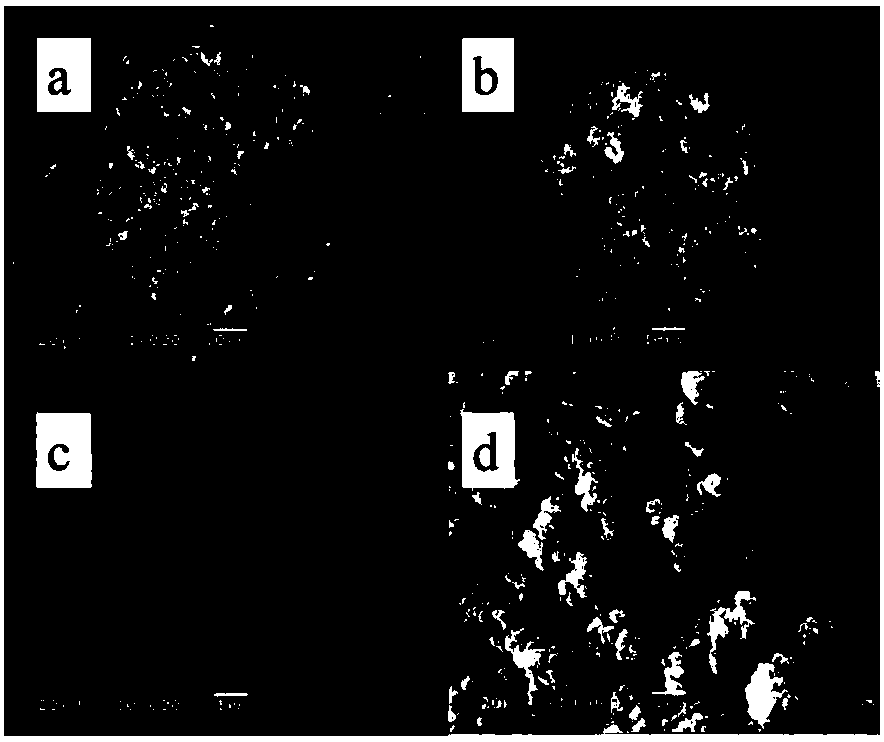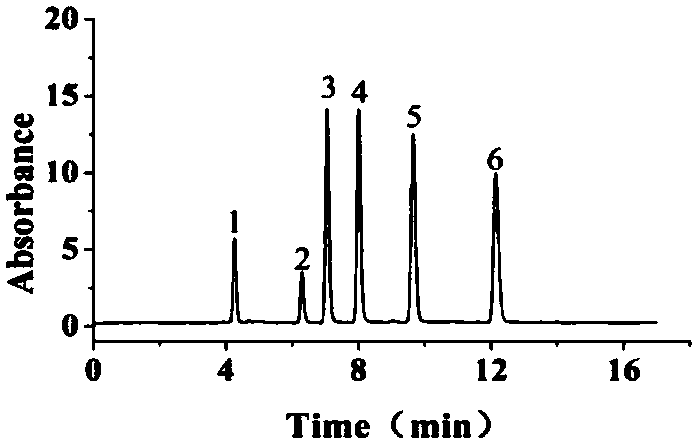A kind of preparation method of highly cross-linked hydrophobic organic monolithic material
A monolithic material and organic technology, applied in the field of preparation of highly cross-linked hydrophobic organic monolithic materials, can solve the problems of cumbersome process, sensitive pH value, difficult to control the rate of radical polymerization, etc., and achieve good permeability, strong hydrophobicity, Easy-to-control effects
- Summary
- Abstract
- Description
- Claims
- Application Information
AI Technical Summary
Problems solved by technology
Method used
Image
Examples
Embodiment 1
[0029] 1) Add 30 mg of DPEPA reagent to the UV transparent centrifuge tube.
[0030] 2) Add 17.4 mg of functional monomer LMA to the above-mentioned ultraviolet transparent centrifuge tube.
[0031] 3) Add 140 μL of n-hexanol and 20 μL of ethylene glycol into the above-mentioned UV transparent centrifuge tube.
[0032] 4) Add 0.15 mg of photoinitiator to the above-mentioned ultraviolet transparent centrifuge tube.
[0033] 5) Ultrasonicate the above-mentioned centrifuge tube for 5 minutes to mix the various components therein evenly, and remove the dissolved oxygen dissolved therein.
[0034] 6) Introduce 1 μL of the pre-polymerization solution obtained in step 5) into a 75 μm (inner diameter) UV-transparent capillary that has been previously activated with 3-(trimethoxysilyl)propyl methacrylate with a syringe, and then Both ends of the capillary were sealed with silica gel, and then the UV transparent centrifuge tube containing the remaining mixed solution was sealed.
[0...
Embodiment 2
[0038] 1) Add 25 mg of DPEPA reagent to the UV transparent centrifuge tube.
[0039] 2) Add 22.4 mg of functional monomer LMA to the above-mentioned ultraviolet transparent centrifuge tube.
[0040] 3) Add 140 μL of n-hexanol and 20 μL of ethylene glycol into the above-mentioned UV transparent centrifuge tube.
[0041]4) Add 0.15 mg of photoinitiator to the above-mentioned ultraviolet transparent centrifuge tube.
[0042] 5) Ultrasonicate the above-mentioned centrifuge tube for 5 minutes to mix the various components therein evenly, and remove the dissolved oxygen dissolved therein.
[0043] 6) Introduce 1 μL of the pre-polymerization solution obtained in step 5) into a 75 μm (inner diameter) UV-transparent capillary that has been previously activated with 3-(trimethoxysilyl)propyl methacrylate with a syringe, and then Both ends of the capillary were sealed with silica gel, and then the UV transparent centrifuge tube containing the remaining mixed solution was sealed.
[00...
PUM
 Login to View More
Login to View More Abstract
Description
Claims
Application Information
 Login to View More
Login to View More - R&D
- Intellectual Property
- Life Sciences
- Materials
- Tech Scout
- Unparalleled Data Quality
- Higher Quality Content
- 60% Fewer Hallucinations
Browse by: Latest US Patents, China's latest patents, Technical Efficacy Thesaurus, Application Domain, Technology Topic, Popular Technical Reports.
© 2025 PatSnap. All rights reserved.Legal|Privacy policy|Modern Slavery Act Transparency Statement|Sitemap|About US| Contact US: help@patsnap.com



